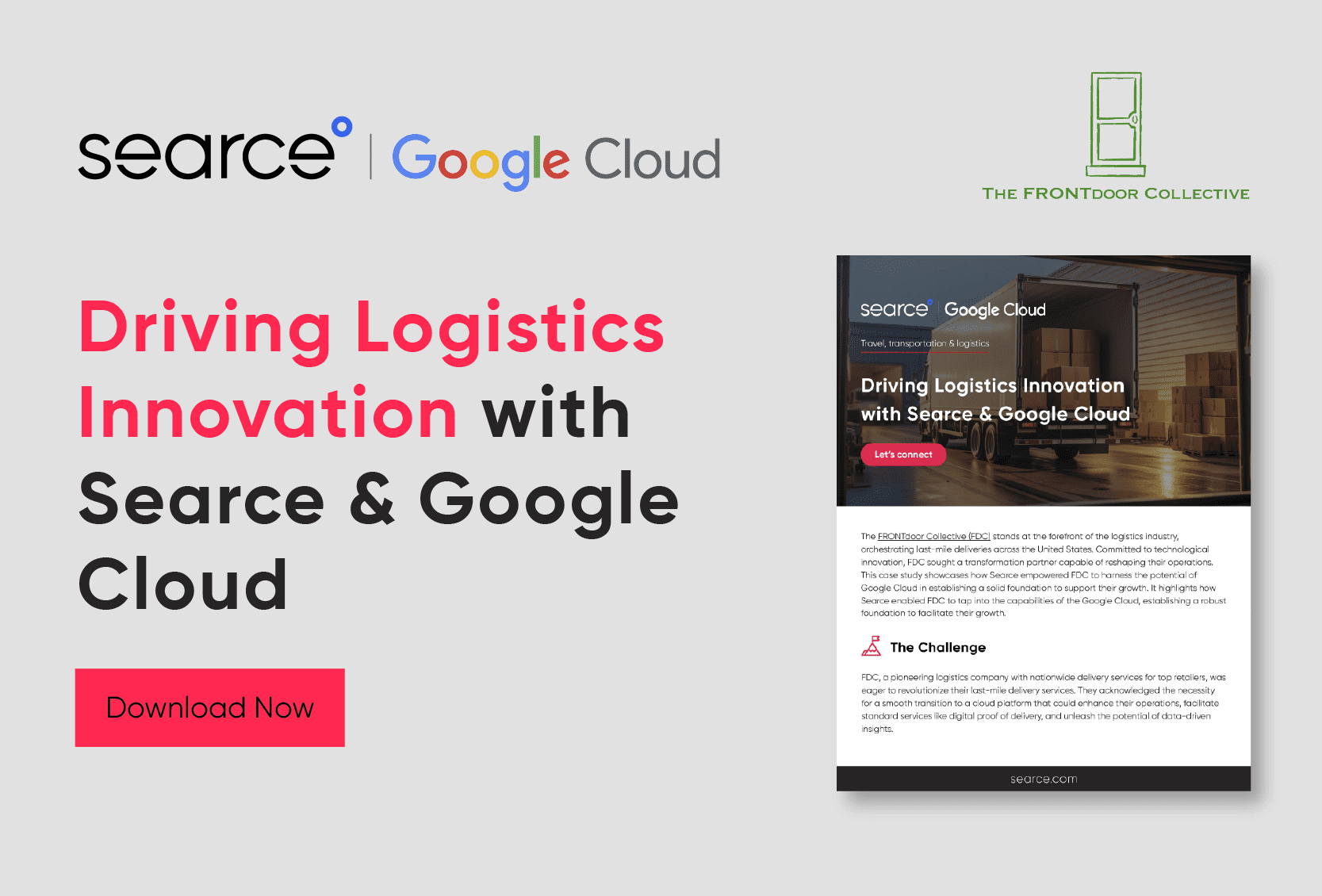Rapido: Finding the quickest route to success with Google
Founded in 2015, Rapido operates a mobile application-based two-wheeler taxi service in close to 100 cities in India. More than 1.5 million “captains” or riders operate taxis through the application—a number that has grown three- to four-fold year on year—while the business has grown to more than 1,500 employees. “If a consumer wants to travel from point A to point B, they simply open up the app on their smartphone, select pickup and dropoff locations, and tap ‘request,'” explains Srivatsa Katta, Head of Engineering at Rapido. “We can track that request to the nearest available two-wheeler taxi and allocate the job to the right rider.”

Rapido recently extended its business from two-wheeler taxis to include Rapido Local (a person-to-person delivery service) and Rapido Store (which helps online and offline businesses with customer delivery).
Treating Captains as Stakeholders
Srivatsa attributes Rapido’s longer term success to two factors: building a service that treats captains as crucial stakeholders and curates products around them and concentrating 90% of its operations in cities the Indian Government classifies as Tier 2 or Y, or Tier 3 or Z, based on size and criteria around public service payments. “Most of our competitors focus on the top five or six cities in India,” says Srivatsa. “We also built our entire model from scratch, giving us an advantage over similar businesses looking to gain a foothold here.”
Rapido developed its core applications in-house–including the application that manages vehicle despatch–and complements them with vendor-built applications to support activities such as customer support.
The business initially relied on a multi-cloud architecture to run its applications, but increases in traffic and the need to operate with greater agility, control costs, and deliver a superior experience prompted consolidation onto a single cloud service. The business had grown to operate 100+ microservices across more than 400 virtual instances in multiple clouds.
“Running across several providers required us to manage multiple relationships, and new developers had to take time to work out where to make changes and deploy,” says Srivatsa. “We also experienced latency that threatened to compromise the experience for captains and customers. Being a real-time service, we needed to provide a superior experience, based on low latency. Furthermore, we were experiencing outages when running on some providers.”
Consolidation Key to Success
Rapido elected to consolidate onto Google Cloud. “Google Cloud’s native integration with Kubernetes and the speed with which the open source community updates the container orchestration system played a key role in our decision,” says Srivatsa.
Rapido moved 95% of its applications across in four to six months, primarily using internal resources, and is now running 98% of its apps and workloads in Google Cloud. The business’s embrace of Google Cloud extends to deploying Google Workspace to its 1,500-strong workforce. The deep integration between Google Cloud and Google Workspace is playing a key role in Rapido’s internal response to government measures to control the coronavirus pandemic.
“Nearly all of our team members are working from home due to the pandemic, with a single-figure percentage of our workforce visiting our office to complete tasks they could not do otherwise,” explains Srivatsa. “We have greatly increased our use of Google Meet video meetings during this difficult period, while Sheets and Docs enable collaborative working and Gmail acts as our main communication channel. These applications enable us to work effectively in the distributed ‘new normal.’”
Cloud Functions from Google Cloud complements Google Workspace in helping Rapido’s workforce operate in a distributed, remote manner. The service–that enables developers to run code without managing servers–enables them to operate in isolated environments without disruption.
Google Maps Platform Enhances Service
Rapido is also using Google Maps Platform to gain a competitive edge. Geocoding API enables the application to convert addresses to geographic coordinates, and the reverse, allowing consumers to identify point A and point B on their journey. The company also uses Directions API to identify the fastest route between pickup and dropoff locations, which enables Rapido to provide users with approximate prices for trips. Distance Matrix API is used to calculate the travel times and distances between locations, and Maps SDKs for Maps SDK for Android and Maps SDK for iOS to add interactive maps to the app.
In addition, Rapido uses the Snap to Roads service to deliver best-fit geometry for sets of GPS coordinates within the Roads API, which identifies and provides metadata about the roads on which drivers travel. “Snap to Roads in Roads API allows us to optimize the path drivers take and helps ensure the fare charged is accurate,” says Srivatsa.
In 2017, Rapido asked Google Cloud Premier Partner Searce to help enhance its use of the platform. Searce provided the technical and business advice that prompted Rapido to take advantage of the unlimited API calls, 24 hours a day, 7 days a week support, and strict SLAs available through the Google Maps APIs Premium Plan for Asset Tracking.
Searce also helped Rapido optimize its API calls and integrate directions and distance calls with the Roads API to smooth out variations in GPS readings received from the handsets of two-wheeler taxi owners. Finally, Searce helped Rapido deploy the Firebase mobile and web development platform to automate the mode configuration of the API keys, rather than maintain a time-consuming manual process. This move also minimized the likelihood of any issues arising if Rapido decided to start multiple projects or add more licenses, or combine Google Maps APIs Premium Plan for Asset Tracking with an external license. Searce now provides ongoing support and advice.
Firebase Supports Application Development, Testing, and Modification
Furthermore, Rapido uses a range of Firebase services for application development, testing, and modification. The business also employs Google Analytics for Firebase to measure customer use of and engagement with its application, enabling it to make informed decisions about where to direct its resources. In addition, the business is using the Firebase Test Lab application-testing infrastructure to test its Android and iOS app versions across a range of device configurations, view the outcomes, and make changes as needed.
Rapido uses Firebase Remote Config to change the application’s behavior and appearance on the fly in response to the results of A/B testing across sections of its user base. Furthermore, Rapido uses Firebase Crashlytics to provide app crash reports to its Firebase console.
Firebase Dynamic Links allows Rapido to direct users to linked content in the iOS or Android version of the application, while Firebase Cloud Messaging enables Rapido to deliver notifications and other messages to users. Firestore provides a NoSQL cloud database to store and sync data for the Rapido application. Rapido also uses the Firebase Realtime Database to store and sync information about customers that can be used to provide a more informed, personalized service.
Google Kubernetes Engine Delivers Scalable Containerization
Rapido now uses Google Kubernetes Engine to run its applications in a secure, managed, and scalable containerized infrastructure. Cloud SQL runs the organization’s relational databases, while Cloud Key Management manages cryptographic keys stored in third-party vault software.
Meanwhile, Cloud Vision enables Rapido to automate and accelerate the onboarding of new captains. Applicants upload licenses and vehicle registration details to the application, and the business verifies the documents using the Google Cloud service—meaning the entire process can be completed in just a few minutes. The organization continues to explore use cases for Vision AI that can improve customer safety, including detecting whether a captain is wearing a mask during a journey and whether they are using the bike registered with Rapido for the service.
Moving to a Rapid-Release Cycle
With Google Cloud, Rapido has moved to a rapid-release cycle, securing the agility needed to compete and meet demanding captain and customer requirements. The business can complete 10–15 minor releases per day and deliver a consolidated app release featuring major enhancements and new features once a fortnight.
Rapido was able to release Rapido Local, which provides on-demand customer-to-customer delivery services, and Rapido Store, which allows small to medium-sized businesses to deliver goods on demand to customers, in just a couple of weeks. “We felt helping small-to-medium businesses, with people not turning up on their doorsteps, was particularly important,” says Srivatsa. “Thanks to Google Cloud, we did not have to build any more infrastructure to create the services—businesses and customers can simply book the delivery rides through the Rapido app.” The services have surged in popularity and today constitute nearly one-third of the organization’s business.
Investment Planned in Data Analytics
The business now plans to expand its investment in Google Cloud to enhance its data analytics capabilities. “As we grow, we need to obtain more detailed analysis and insights to provide even better services to our captains and customers,” says Srivatsa. This means expanding its use of BigQuery from exploratory analysis and building a skilled data team to deliver insights into opportunities to market multiple services to individual customers. This will enable the business to leverage four years’ worth of data to make important decisions about acquisition, growth, and marketing. Rapido has also started investing in machine learning and is looking at how to run algorithms to support demand forecasting.
Srivatsa summarizes Rapido’s experience as “Google Cloud helping the business in many more ways than I expected. We are now in a position to continue to deliver new services quickly to support captains, consumers, and businesses across India and maintain our position as the local bike-taxi provider of choice.”
more case studies

Driving Logistics Innovation with Searce & Google Cloud

Yaantra partners with Searce & Google Cloud to help consumers with a single window stopover for smart gadgets in India
